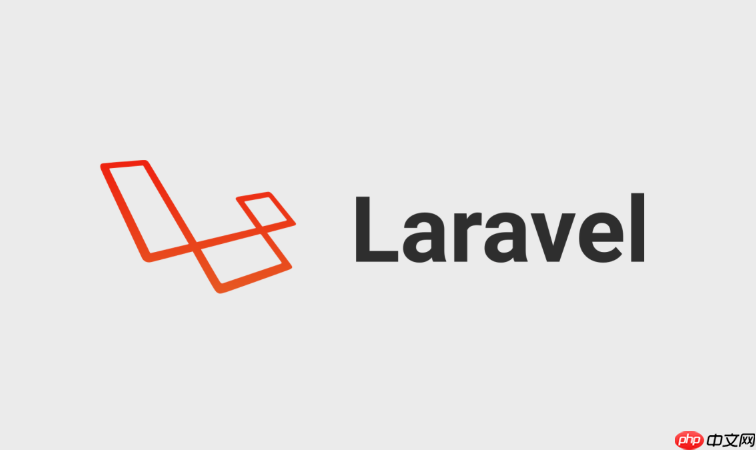答案:Laravel中RBAC核心数据模型由users、roles、permissions三张表及role_user、permission_role两个多对多关联表构成,通过Eloquent的belongsToMany关系实现用户、角色、权限的灵活关联,支持动态权限分配。

在Laravel中,实现基于角色的权限控制(RBAC)和用户授权系统,我的首选方案是结合Eloquent模型关联、中间件(Middleware)以及Laravel自带的Gate或Policy机制。这套组合拳能有效地将用户、角色、权限三者串联起来,确保系统在每个关键操作前都能准确判断用户是否有权。
我的做法通常是这样的:首先,我会构建一套清晰的数据库结构来承载用户、角色和权限之间的关系。这包括一个
users
roles
permissions
role_user
permission_role
接着,在Eloquent模型中定义好这些多对多关系。比如,
User
roles()
Role
users()
permissions()
Permission
roles()
授权逻辑的实现,我会根据场景选择不同的策略:
Gate
AuthServiceProvider
Gate::allows('permission-name')Auth::user()->can('permission-name')Policy
viewAny
view
create
update
delete
Auth::user()->can('update', $post)PostPolicy
update
can
在我看来,这种分层且灵活的授权机制,不仅让代码结构清晰,也极大地提升了系统的可维护性。当业务需求变化时,我们只需要调整角色与权限的分配,或者修改Policy的逻辑,而无需改动核心业务代码。
说实话,RBAC的核心在于它的数据模型,这直接决定了系统的弹性和可扩展性。我的经验告诉我,一个好的数据库设计能省去未来无数的麻烦。
首先,我们得有用户。
users
id
name
password
接着是
roles
administrator
editor
viewer
id
name
description
然后是
permissions
create-post
edit-own-post
delete-any-post
manage-users
id
name
description
关键来了,如何将这些关联起来?
用户与角色(User-Role):一个用户可以有多个角色,一个角色也可以分配给多个用户,典型的多对多关系。所以,我们需要一个中间表
role_user
user_id
role_id
CREATE TABLE role_user (
user_id BIGINT UNSIGNED NOT NULL,
role_id BIGINT UNSIGNED NOT NULL,
PRIMARY KEY (user_id, role_id),
FOREIGN KEY (user_id) REFERENCES users(id) ON DELETE CASCADE,
FOREIGN KEY (role_id) REFERENCES roles(id) ON DELETE CASCADE
);角色与权限(Role-Permission):一个角色可以拥有多个权限,一个权限也可以被分配给多个角色,这又是另一个多对多关系。因此,需要
permission_role
permission_id
role_id
CREATE TABLE permission_role (
permission_id BIGINT UNSIGNED NOT NULL,
role_id BIGINT UNSIGNED NOT NULL,
PRIMARY KEY (permission_id, role_id),
FOREIGN KEY (permission_id) REFERENCES permissions(id) ON DELETE CASCADE,
FOREIGN KEY (role_id) REFERENCES roles(id) ON DELETE CASCADE
);在Laravel的Eloquent模型中,这些关系会被这样定义:
User.php
public function roles()
{
return $this->belongsToMany(Role::class);
}Role.php
public function users()
{
return $this->belongsToMany(User::class);
}
public function permissions()
{
return $this->belongsToMany(Permission::class);
}Permission.php
public function roles()
{
return $this->belongsToMany(Role::class);
}这种设计,在我看来,既符合RBAC的规范,又足够灵活。它允许我们通过调整中间表中的记录,来动态地为用户分配角色,为角色分配权限,而无需修改任何代码。
这确实是很多初学者容易混淆的地方,但理解它们的区别和适用场景,能让你的授权逻辑清晰很多。
Gate(门禁)
Gate更像是系统级的“门禁”,它检查的是某个用户是否具备执行某个“动作”的能力,这个“动作”往往不直接绑定到某个特定的模型实例。
适用场景:

TURF(开源)权限定制管理系统(以下简称“TURF系统”),是蓝水工作室推出的一套基于软件边界设计理念研发的具有可定制性的权限管理系统。TURF系统充分考虑了易用性,将配置、设定等操作进行了图形化设计,完全在web界面实现,程序员只需在所要控制的程序中简单调用一个函数,即可实现严格的程序权限管控,管控力度除可达到文件级别外,还可达到代码级别,即可精确控制到
 0
0

实现细节: 通常在
AuthServiceProvider
boot
use Illuminate\Support\Facades\Gate;
public function boot()
{
$this->registerPolicies();
Gate::define('manage-users', function (User $user) {
return $user->roles()->where('name', 'admin')->exists();
});
Gate::define('create-post', function (User $user) {
// 假设只有编辑和管理员能创建文章
return $user->roles()->whereIn('name', ['admin', 'editor'])->exists();
});
}使用方式:
if (Gate::allows('manage-users')) {
// ...
}
// 或者在Blade模板中
@can('create-post')
<button>创建新文章</button>
@endcan
// 或者通过User实例
if (Auth::user()->can('create-post')) {
// ...
}我个人觉得Gate很适合那些“是或否”的粗粒度权限,它定义起来直接,用起来也方便。
Policy(策略)
Policy则更像是针对特定模型的“行为准则”,它定义了用户对某个特定模型实例可以执行哪些操作。这让授权逻辑与模型紧密结合,代码也更具组织性。
适用场景:
view
create
update
delete
实现细节: 首先,使用Artisan命令生成Policy:
php artisan make:policy PostPolicy --model=Post
AuthServiceProvider
protected $policies = [
Post::class => PostPolicy::class,
];PostPolicy.php
namespace App\Policies;
use App\Models\User;
use App\Models\Post;
use Illuminate\Auth\Access\HandlesAuthorization;
class PostPolicy
{
use HandlesAuthorization;
// 在执行任何其他授权方法之前运行,可以用于“超级管理员”绕过所有检查
public function before(User $user, $ability)
{
if ($user->roles()->where('name', 'admin')->exists()) {
return true;
}
}
public function viewAny(User $user)
{
// 任何登录用户都可以查看文章列表
return $user->id !== null;
}
public function view(User $user, Post $post)
{
// 登录用户可以查看所有文章
return $user->id !== null;
}
public function create(User $user)
{
// 只有编辑和管理员能创建文章
return $user->roles()->whereIn('name', ['admin', 'editor'])->exists();
}
public function update(User $user, Post $post)
{
// 只有文章作者或管理员可以更新文章
return $user->id === $post->user_id || $user->roles()->where('name', 'admin')->exists();
}
public function delete(User $user, Post $post)
{
// 只有文章作者或管理员可以删除文章
return $user->id === $post->user_id || $user->roles()->where('name', 'admin')->exists();
}
}使用方式:
$post = Post::find(1);
if (Auth::user()->can('update', $post)) {
// ...
}
// 在控制器中
public function update(Request $request, Post $post)
{
$this->authorize('update', $post); // 如果没有权限,会自动抛出403异常
// ...
}
// 在Blade模板中
@can('delete', $post)
@endcan在我看来,Policy是处理模型授权的“最佳实践”,它将授权逻辑封装在专门的类中,使得控制器和模型保持干净,也更容易测试。
总结:如果你需要判断用户对某个动作是否有权限,用Gate;如果你需要判断用户对某个特定模型实例的某个操作是否有权限,用Policy。通常,我会把两者结合起来使用,让它们各司其职。
当项目规模扩大,角色和权限的数量也随之增长时,RBAC的管理和维护就成了个不小的挑战。我的经验是,仅仅实现它还不够,还需要一套策略来确保它的健壮性和可操作性。
权限的命名规范:这是最基础也最容易被忽视的一点。我会坚持使用清晰、一致的命名约定,比如
{resource}-{action}post-create
user-view-any
{action}-{resource}edit-own-post
edit-any-post
利用Seeder进行初始化:对于系统内置的角色和权限,我强烈建议使用数据库Seeder进行初始化。这不仅保证了不同环境(开发、测试、生产)下权限数据的一致性,也方便了团队协作。
// DatabaseSeeder.php
public function run()
{
// ...
$adminRole = Role::firstOrCreate(['name' => 'admin', 'description' => 'Administrator']);
$editorRole = Role::firstOrCreate(['name' => 'editor', 'description' => 'Content Editor']);
$createPostPermission = Permission::firstOrCreate(['name' => 'create-post', 'description' => 'Can create new posts']);
$editOwnPostPermission = Permission::firstOrCreate(['name' => 'edit-own-post', 'description' => 'Can edit their own posts']);
$editAnyPostPermission = Permission::firstOrCreate(['name' => 'edit-any-post', 'description' => 'Can edit any post']);
$adminRole->permissions()->sync([
$createPostPermission->id,
$editOwnPostPermission->id,
$editAnyPostPermission->id,
// ... 其他所有权限
]);
$editorRole->permissions()->sync([
$createPostPermission->id,
$editOwnPostPermission->id,
]);
// ...
}这样,每次部署或初始化新环境时,只需运行
php artisan db:seed
权限缓存:在大型应用中,每次检查权限都去查询数据库会带来不小的开销。我会考虑对用户的角色和权限进行缓存。例如,在用户登录时,将用户的角色和所有权限ID缓存起来(例如,存储在Session或Redis中),设置一个合理的过期时间。在每次权限检查时,优先从缓存中读取,只有当缓存失效或不存在时才查询数据库。
实现起来,可以在
User
getPermissionsAttribute()
getRolesAttribute()
清晰的后台管理界面:虽然这不属于代码实现范畴,但一个直观、易用的后台管理界面对于维护RBAC系统至关重要。管理员应该能够轻松地:
这能让非技术人员也能参与到权限管理中来,大大降低了维护成本。
单元测试和功能测试:权限逻辑是应用中最核心、最敏感的部分之一。任何授权逻辑的改动都可能带来安全漏洞。因此,为Gate和Policy编写详尽的单元测试是必不可少的。同时,通过功能测试(如HTTP测试),模拟不同角色的用户访问受保护的路由和操作,确保授权系统按预期工作。
// Example: Feature Test for Post Update
public function test_admin_can_update_any_post()
{
$admin = User::factory()->create();
$admin->roles()->attach(Role::where('name', 'admin')->first());
$post = Post::factory()->create();
$response = $this->actingAs($admin)->put(route('posts.update', $post), [
'title' => 'Updated Title',
'content' => 'Updated Content',
]);
$response->assertStatus(200);
$this->assertDatabaseHas('posts', ['id' => $post->id, 'title' => 'Updated Title']);
}
public function test_editor_cannot_update_other_users_post()
{
$editor = User::factory()->create();
$editor->roles()->attach(Role::where('name', 'editor')->first());
$post = Post::factory()->create(); // Created by another user
$response = $this->actingAs($editor)->put(route('posts.update', $post), [
'title' => 'Updated Title',
'content' => 'Updated Content',
]);
$response->assertStatus(403); // Forbidden
}权限审计与日志:在一些对安全性要求较高的应用中,记录所有授权失败的尝试(谁、何时、尝试访问什么、为什么失败)是非常有价值的。这有助于发现潜在的攻击行为或配置错误。
总而言之,一个好的RBAC系统不仅仅是代码层面的实现,更是一套从设计、开发到部署、维护的全生命周期管理策略。
以上就是Laravel如何实现基于角色的权限控制_用户授权系统设计的详细内容,更多请关注php中文网其它相关文章!

每个人都需要一台速度更快、更稳定的 PC。随着时间的推移,垃圾文件、旧注册表数据和不必要的后台进程会占用资源并降低性能。幸运的是,许多工具可以让 Windows 保持平稳运行。

Copyright 2014-2025 https://www.php.cn/ All Rights Reserved | php.cn | 湘ICP备2023035733号